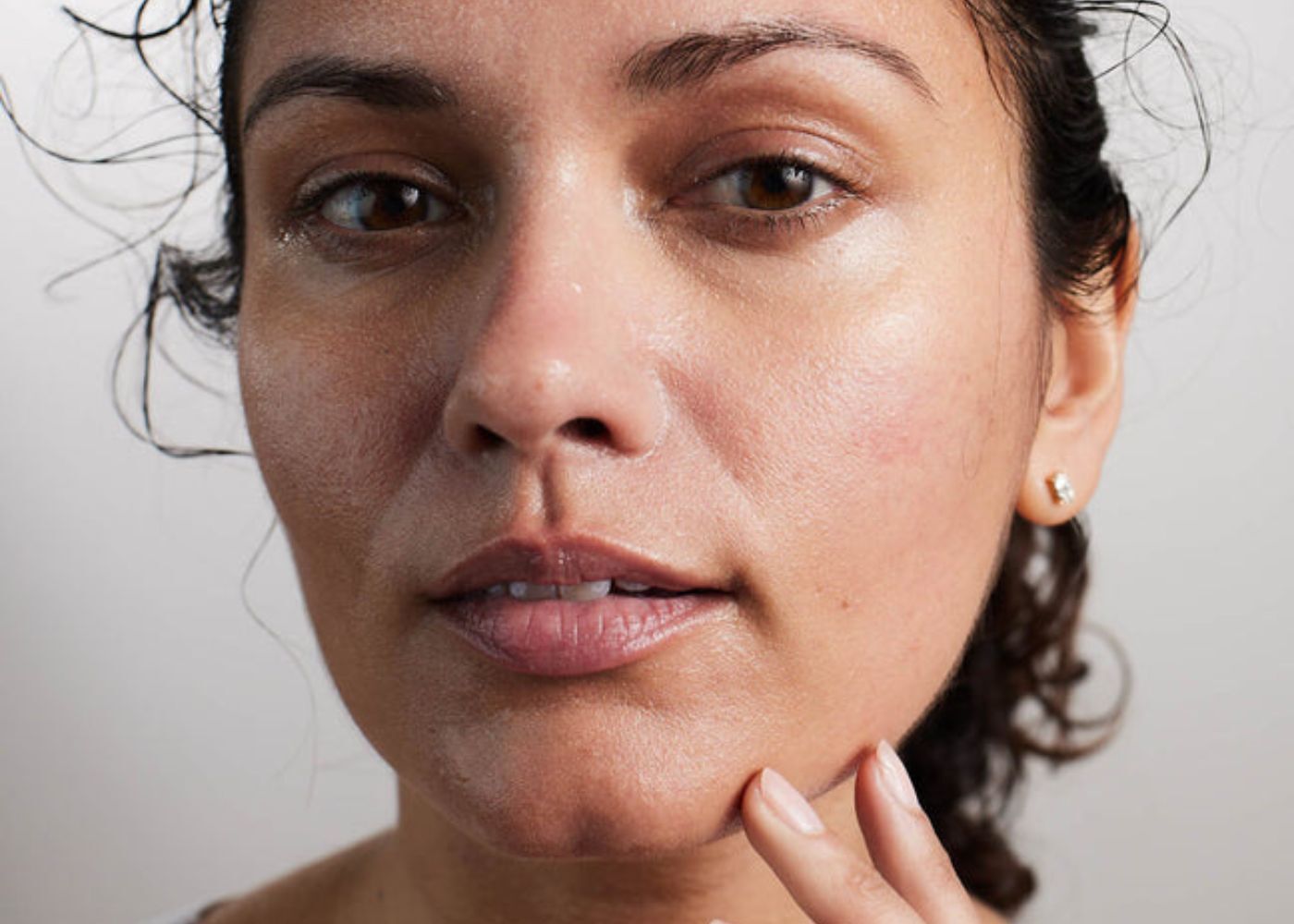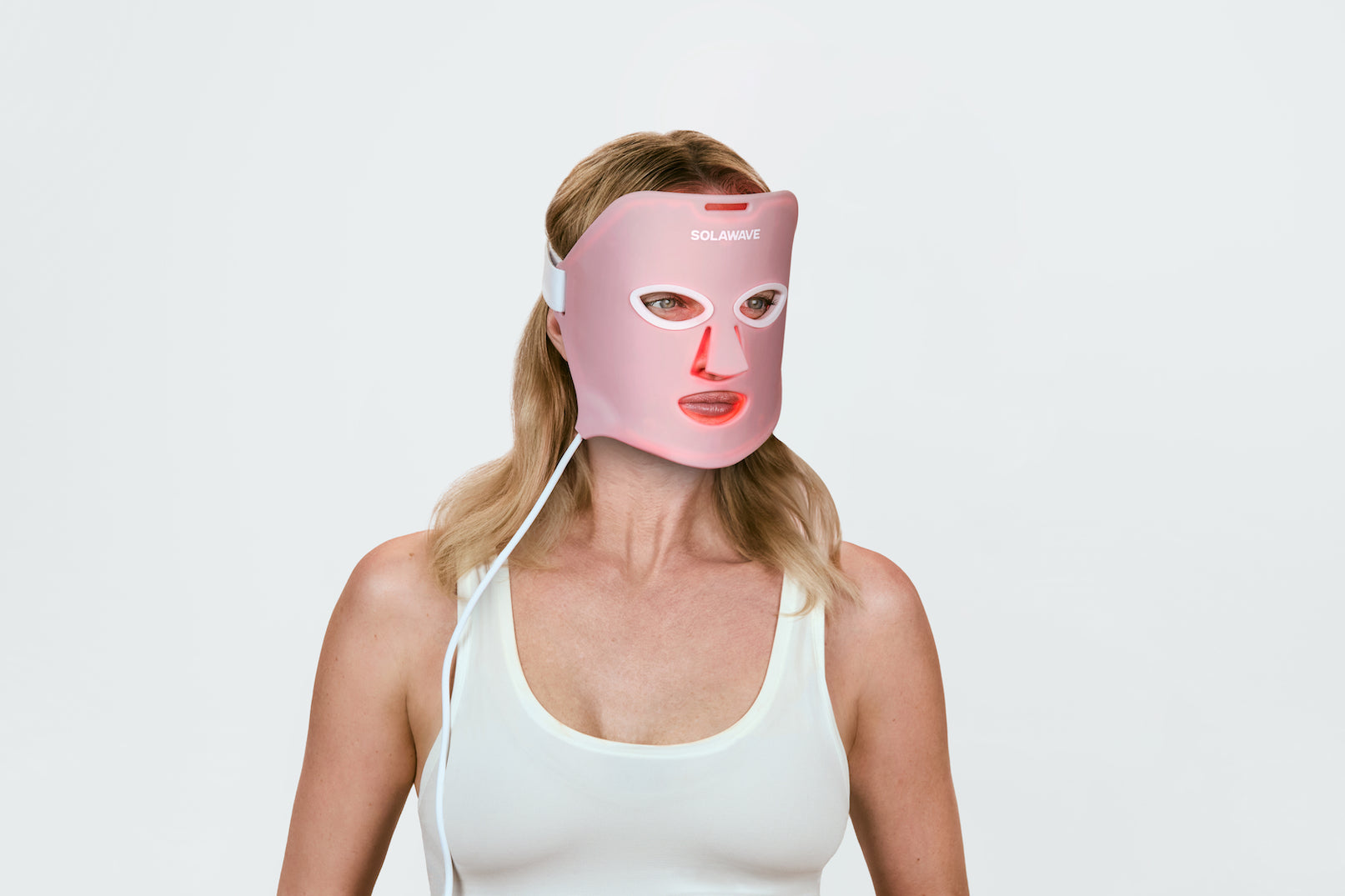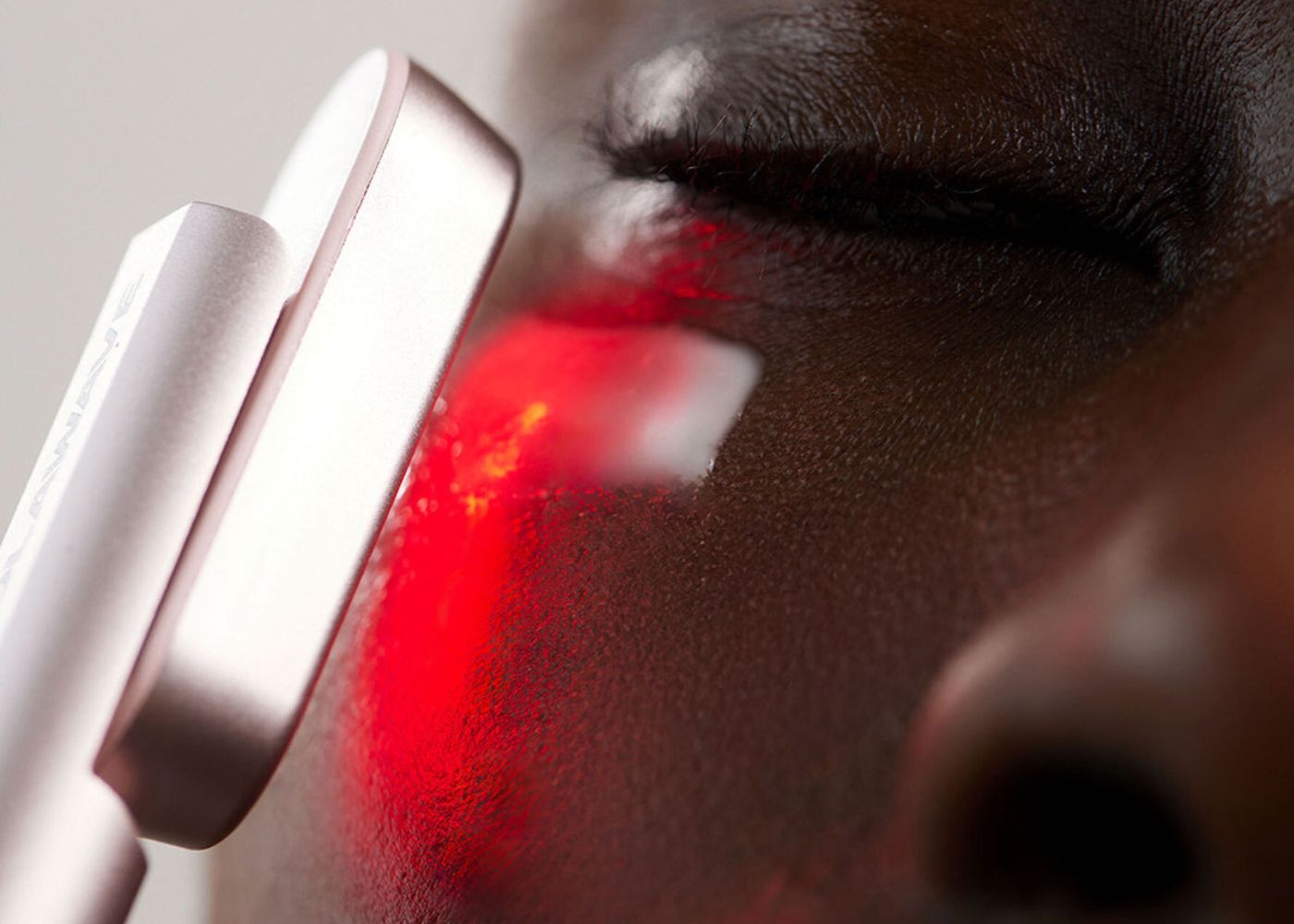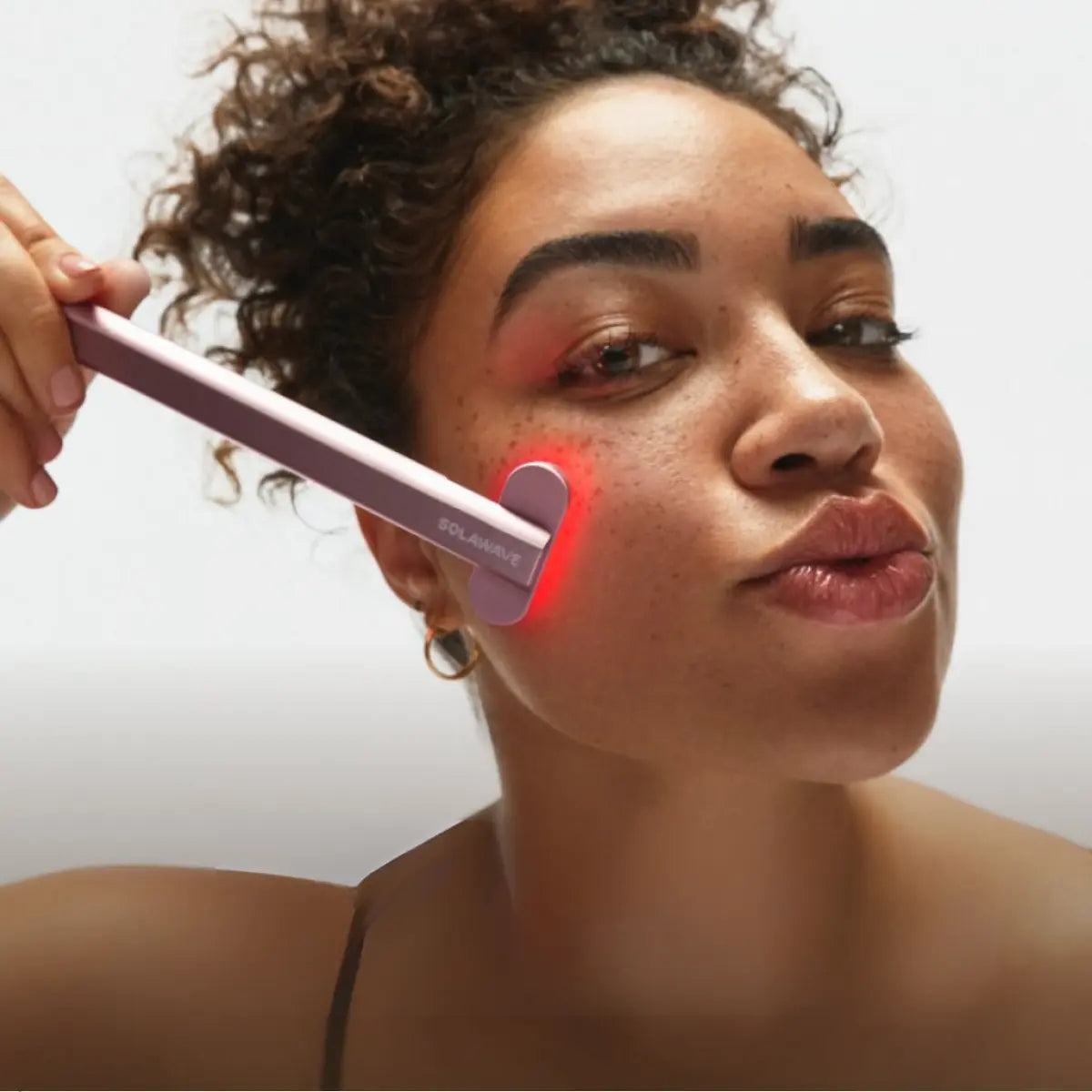 Dark Circles
Dark Circles

Treating Dark Circles: Top 3 Methods
Dark circles under your eyes can make you look tired, stressed, or older than you feel. They’re a common concern for many women, no matter your age or skin type. While there are plenty of creams, home remedies, and cosmetic treatments out there, not all solutions deliver the same results. If you’re searching for a gentle, effective way to support healthier-looking skin, Light Therapy stands out as the top method to help refresh and brighten your under-eye area.
What Causes Dark Circles?
Dark circles can show up for a variety of reasons, and understanding what’s behind them can help you choose the best way to address them.
Genetics and Skin Tone
Some people are naturally more likely to develop dark circles because of their genetics. If your family members have them, you might notice them too. Skin tone also plays a role—those with lighter or thinner skin may see dark circles more easily, while deeper skin tones may notice more pigmentation changes under the eyes.
Lifestyle Factors: Sleep, Stress, and Diet
Lack of sleep is a well-known cause of dark circles, but stress and diet can also make a difference. When you’re tired or under stress, blood vessels under your eyes can become more visible, making the area look darker. Not drinking enough water or eating a diet low in nutrients can also affect the appearance of your under-eye skin.
Skin Aging and Thinning Under-Eye Skin
As you get older, your skin naturally becomes thinner and loses some of its fullness. This can make the blood vessels under your eyes more noticeable, leading to the appearance of dark circles. The under-eye area is especially delicate, so these changes can show up here first.
Sun Exposure and Pigmentation
Spending time in the sun without protection can increase pigmentation under your eyes. Sun exposure encourages your skin to produce more melanin, which can make dark circles look more pronounced. Wearing sunscreen and sunglasses can help protect this sensitive area.
Top 3 Methods for Treating Dark Circles
When it comes to treating dark circles, you have several options to consider. Each method works differently, so finding the right fit for your needs and lifestyle is important. Here’s a closer look at the top three approaches:
1. Light Therapy
Light Therapy, especially Red Light, has become a standout option for addressing dark circles. This gentle, non-invasive method uses specific wavelengths of light to support healthier-looking skin under your eyes. Red Light Therapy is designed to help improve the appearance of your skin by supporting healthy collagen production, which can make the under-eye area look smoother and more refreshed.
Unlike many other treatments, Red Light Therapy doesn’t require harsh chemicals or downtime. You can use it at home with a handheld device, making it easy to fit into your routine. According to experts, consistent use can help reduce the look of dark circles by improving the look of skin tone and texture. Many women notice their under-eye area looks brighter and more even after regular sessions. Plus, Red Light Therapy is gentle enough for the delicate skin around your eyes and can be paired with other skincare products for even better results.
2. Topical Creams (Retinol, Vitamin C, Caffeine)
Topical creams are a popular choice for treating dark circles. Ingredients like retinol, vitamin C, and caffeine are commonly found in eye creams and serums. Retinol supports cell turnover, which can help smooth the skin and reduce the appearance of dark circles over time. Vitamin C is known for its brightening properties and can help even out skin tone, while caffeine helps to temporarily reduce puffiness by constricting blood vessels under the eyes.
While these creams can be effective, results often depend on consistent use and the specific needs of your skin. Some people may notice improvements in brightness and hydration, but it can take several weeks to see visible changes.
3. Cosmetic Procedures (Fillers, Chemical Peels, Laser Treatments, Botox®)
For those looking for more dramatic results, cosmetic procedures are another option. Fillers can add volume to the under-eye area, helping to reduce the shadowing that makes dark circles more noticeable. Chemical peels and laser treatments target pigmentation and can help even out skin tone. Botox® is sometimes used to relax muscles around the eyes, which can soften the look of dark circles caused by muscle movement.
These procedures are typically performed by a skincare professional and may involve some downtime or aftercare. They can offer noticeable improvements, but they also come with higher costs and potential side effects, so it’s important to discuss your options with a trusted provider.
Choosing the right method depends on your goals, budget, and how much time you want to invest. Light Therapy stands out for its gentle approach and ability to fit easily into your daily routine, making it a top choice for many women seeking healthier-looking skin under their eyes.
Why Choose Red Light Therapy Over Other Dark Circle Treatments?
Red Light Therapy stands out as a gentle, effective way to address dark circles, especially for the delicate under-eye area. This method uses specific wavelengths of red light to reach the deeper layers of your skin, supporting healthy collagen production and helping your skin look smoother and more radiant. By encouraging your skin’s natural renewal process, Red Light Therapy can help reduce the appearance of dark circles and support a brighter, more refreshed look.
Compared to other treatments, Red Light Therapy is non-invasive and gentle—there are no needles, harsh chemicals, or discomfort involved. You won’t need to worry about downtime or side effects, so you can easily fit sessions into your daily routine. Many devices, like the Red Light Therapy Eye Mask, are designed for at-home use, making it simple to treat your under-eye area whenever it’s convenient for you.
Scientific studies and user experiences support the benefits of Red Light Therapy for improving skin appearance. With regular use, you may notice your under-eye area looking more even-toned and healthier, without the risks or recovery time associated with more aggressive treatments.
How to Use Red Light Therapy for Dark Circles
Choosing the Right Device for the Under-Eye Area
Look for a device specifically designed for the delicate skin under your eyes, such as a Red Light Therapy Eye Mask. These devices are shaped to fit comfortably and deliver the right amount of light to the targeted area.
Step-by-Step Guide to Using Red Light Therapy at Home
-
Start with clean, dry skin.
-
Place the device gently over your under-eye area, following the manufacturer’s instructions.
-
Turn on the device and allow it to run for the recommended time—usually around 10-15 minutes per session.
-
Remove the device and continue with your regular skincare routine.
Tips for Maximizing Results
-
Use Red Light Therapy consistently, aiming for several sessions per week.
-
Pair your treatments with gentle, hydrating skincare products.
-
Always apply sunscreen during the day to protect your skin and maintain results.
What to Expect: Results and Timeline
You may begin to notice changes in the appearance of your dark circles after a few weeks of regular Red Light Therapy sessions. For some, the under-eye area looks brighter and more refreshed within the first month, while others may see gradual improvements over time.
Results can vary based on your skin type, lifestyle, and how consistently you use the device. Staying hydrated, getting enough sleep, and following a gentle skincare routine can all support your results. While Red Light Therapy can help your skin look healthier and more even-toned, it’s important to have realistic expectations—most people see gradual, natural-looking improvements rather than dramatic overnight changes.
Conclusion
Light Therapy stands out as the top choice for treating dark circles, offering a gentle, non-invasive way to support healthier-looking skin under your eyes. With consistent use, Red Light Therapy can help your under-eye area appear brighter and more refreshed, all from the comfort of your own home. If you’re ready to see a visible difference and boost your confidence, consider adding Red Light Therapy to your skincare routine.






